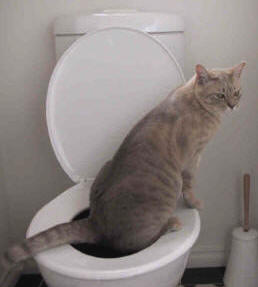Reasons Flushing Cat Poop Down Your Toilet May Cause Problems - Recommendations for Proper Handling
Reasons Flushing Cat Poop Down Your Toilet May Cause Problems - Recommendations for Proper Handling
Blog Article
They are making a few good observations on How to Dispose of Cat Poop and Litter Without Plastic Bags in general in this article directly below.

Introduction
As pet cat proprietors, it's essential to bear in mind how we throw away our feline buddies' waste. While it might seem hassle-free to flush cat poop down the bathroom, this practice can have destructive consequences for both the setting and human health and wellness.
Alternatives to Flushing
Fortunately, there are safer and a lot more liable ways to deal with cat poop. Think about the adhering to options:
1. Scoop and Dispose in Trash
The most common approach of disposing of cat poop is to scoop it right into a biodegradable bag and toss it in the garbage. Be sure to use a dedicated trash inside story and deal with the waste quickly.
2. Use Biodegradable Litter
Choose naturally degradable cat trash made from materials such as corn or wheat. These litters are environmentally friendly and can be securely gotten rid of in the trash.
3. Hide in the Yard
If you have a lawn, consider hiding feline waste in an assigned area away from veggie gardens and water sources. Make certain to dig deep adequate to avoid contamination of groundwater.
4. Mount a Pet Waste Disposal System
Invest in an animal garbage disposal system especially designed for cat waste. These systems use enzymes to break down the waste, lowering odor and environmental influence.
Health and wellness Risks
Along with ecological problems, flushing feline waste can additionally position wellness risks to people. Feline feces may contain Toxoplasma gondii, a bloodsucker that can trigger toxoplasmosis-- a potentially extreme health problem, particularly for pregnant women and people with damaged immune systems.
Environmental Impact
Flushing pet cat poop introduces harmful pathogens and parasites right into the supply of water, posing a considerable threat to water environments. These contaminants can adversely influence marine life and compromise water quality.
Verdict
Accountable family pet possession extends beyond offering food and shelter-- it also includes correct waste management. By avoiding purging cat poop down the commode and opting for alternate disposal approaches, we can lessen our environmental footprint and shield human health.
Why Can’t I Flush Cat Poop?
It Spreads a Parasite
Cats are frequently infected with a parasite called toxoplasma gondii. The parasite causes an infection called toxoplasmosis. It is usually harmless to cats. The parasite only uses cat poop as a host for its eggs. Otherwise, the cat’s immune system usually keeps the infection at low enough levels to maintain its own health. But it does not stop the develop of eggs. These eggs are tiny and surprisingly tough. They may survive for a year before they begin to grow. But that’s the problem.
Our wastewater system is not designed to deal with toxoplasmosis eggs. Instead, most eggs will flush from your toilet into sewers and wastewater management plants. After the sewage is treated for many other harmful things in it, it is typically released into local rivers, lakes, or oceans. Here, the toxoplasmosis eggs can find new hosts, including starfish, crabs, otters, and many other wildlife. For many, this is a significant risk to their health. Toxoplasmosis can also end up infecting water sources that are important for agriculture, which means our deer, pigs, and sheep can get infected too.
Is There Risk to Humans?
There can be a risk to human life from flushing cat poop down the toilet. If you do so, the parasites from your cat’s poop can end up in shellfish, game animals, or livestock. If this meat is then served raw or undercooked, the people who eat it can get sick.
In fact, according to the CDC, 40 million people in the United States are infected with toxoplasma gondii. They get it from exposure to infected seafood, or from some kind of cat poop contamination, like drinking from a stream that is contaminated or touching anything that has come into contact with cat poop. That includes just cleaning a cat litter box.
Most people who get infected with these parasites will not develop any symptoms. However, for pregnant women or for those with compromised immune systems, the parasite can cause severe health problems.
How to Handle Cat Poop
The best way to handle cat poop is actually to clean the box more often. The eggs that the parasite sheds will not become active until one to five days after the cat poops. That means that if you clean daily, you’re much less likely to come into direct contact with infectious eggs.
That said, always dispose of cat poop in the garbage and not down the toilet. Wash your hands before and after you clean the litter box, and bring the bag of poop right outside to your garbage bins.
https://trenchlesssolutionsusa.com/why-cant-i-flush-cat-poop/

As an enthusiastic person who reads about How to Dispose of Cat Poop and Litter Without Plastic Bags, I assumed sharing that blog post was really helpful. So long as you appreciated our blog posting kindly don't forget to pass it around. I love reading our article about Don’t flush cat feces down the toilet.
Website Report this page